Press release 2014-08-01 at 9:14
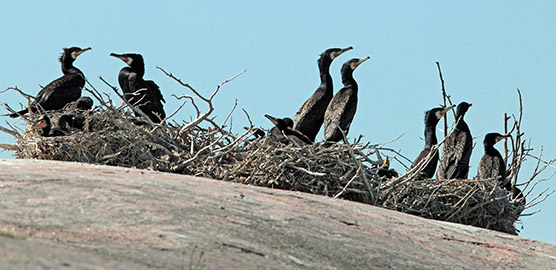
Photo: Heikki Kotiranta
A total of 20,350 cormorant nests were counted in Finland in summer 2014, an increase of nine per cent from the previous year. In contrast to other sea areas, the breeding population of the southern Bothnian Sea continued to decline, falling by eight per cent.
The growth of Finland’s cormorant population has slowed down significantly since the turn of the millennium. In 2005–2009, annual population growth averaged 41 per cent, while in 2010–2014 the corresponding figure was only five per cent. However, throughout its history, the Finnish breeding population’s levels have fallen only twice, in 2010 and 2012.
The cormorant first spread to Finland’s coastal areas from the southern Baltic Sea in the late 1990s. Since then, the cormorant has established itself as a part of Finland’s natural fauna.
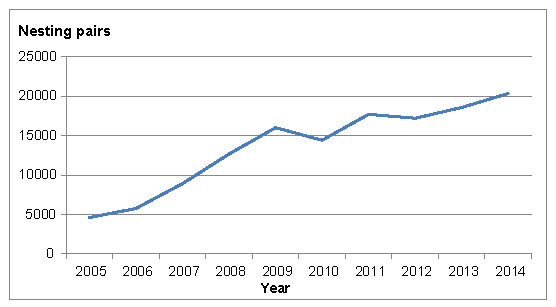
Total number of cormorant nests in 2005–2014.
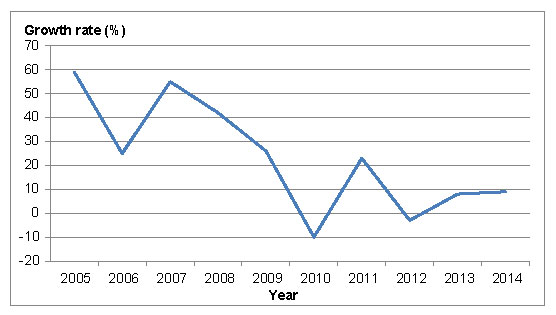
Annual growth rate of the cormorant breeding population in Finland in 2005-2014.
Strongest cormorant population found in the Gulf of Finland
The strongest breeding cormorant population was found in the Gulf of Finland, where a total of approximately 8,150 nests were counted. A total of 5,379 nests were counted in the Bothnian Sea, while 4,850 nests were counted in the Archipelago Sea, 1,771 in Kvarken and 205 in the Bay of Bothnia. The largest increase in the number of nests was recorded in the Gulf of Finland between Porvoo and Virolahti, where the number of nests increased by over a thousand.
In the Archipelago Sea, the number of nests increased by approximately 450, the largest growth taking place in a colony in Uusikaupunki. In the southern Bothnian Sea the number of nests decreased significantly in Luvia and Pori, but increased in Rauma and Merikarvia. The Merikarvia colony is the largest cormorant colony in Finland, comprising 3,013 nests. In Kvarken, the population is centred around three colonies in Nykarleby.
A total of 44 cormorant colonies were found in Finnish sea areas, nesting on 71 islets or islands over an area totalling approximately 55 hectares. Less than one fifth of the cormorants nested in trees. Over half of the nests were located in nature conservation areas. A total of nine new colonies were found this year, located in Hamina, Porvoo, Raseborg, Turku, Kimitoön, Malax and Vaasa.
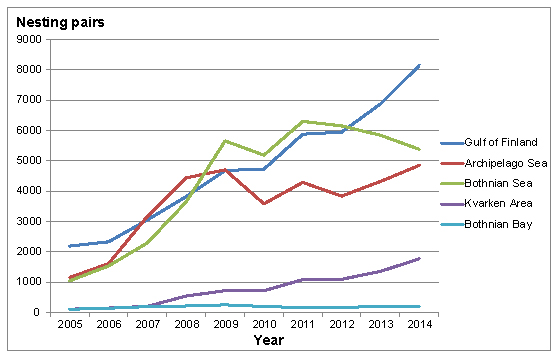
Cormorant nest numbers by sea area in 2005–2014.
White-tailed eagles impacted nesting success
White-tailed eagles can have a negative impact on cormorant nesting as a result of frightening the birds before they lay their eggs and later by devouring cormorant eggs and chicks.
White-tailed eagles were observed in cormorant colonies in the Gulf of Finland, the Archipelago Sea and the Bothnian Sea. Of the large colonies disturbed by white-tailed eagles, the ones in Pargas and Pori have declined by a total of 2,600 nests over the past few years.
The presence of white-tailed eagles was also evident in several smaller colonies. The nesting of a total of seven colonies failed, partially due to the impact of white-tailed eagles. In addition to this, three established nesting sites in the outer archipelago were abandoned. Nests confirmed to have been illegally destroyed by humans were found at least in Siikajoki.
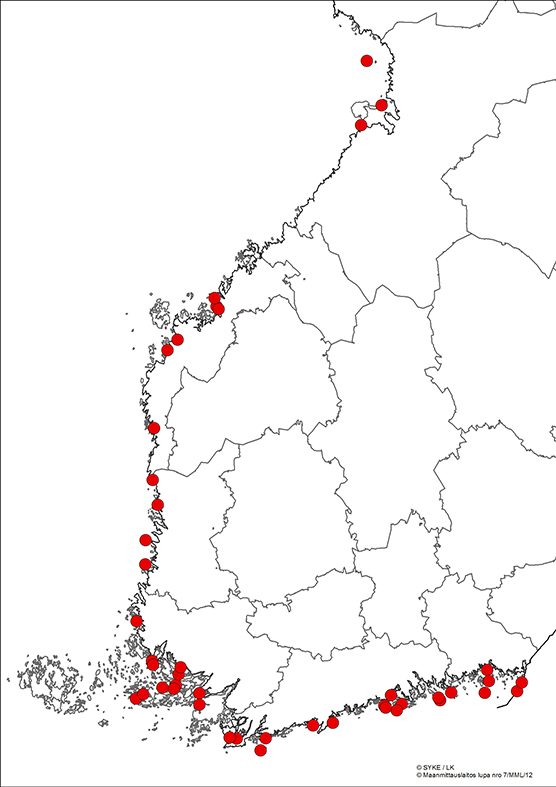
Cormorant nesting colonies in summer 2014.
For further information, please contact:
Pekka Rusanen, Researcher, Finnish Environment Institute SYKE,
tel. +358 400 148 691, firstname.lastname@ymparisto.fi
Markku Mikkola-Roos, Senior Researcher, Finnish Environment Institute SYKE,
tel. +358 400 148 685, firstname.lastname@ymparisto.fi